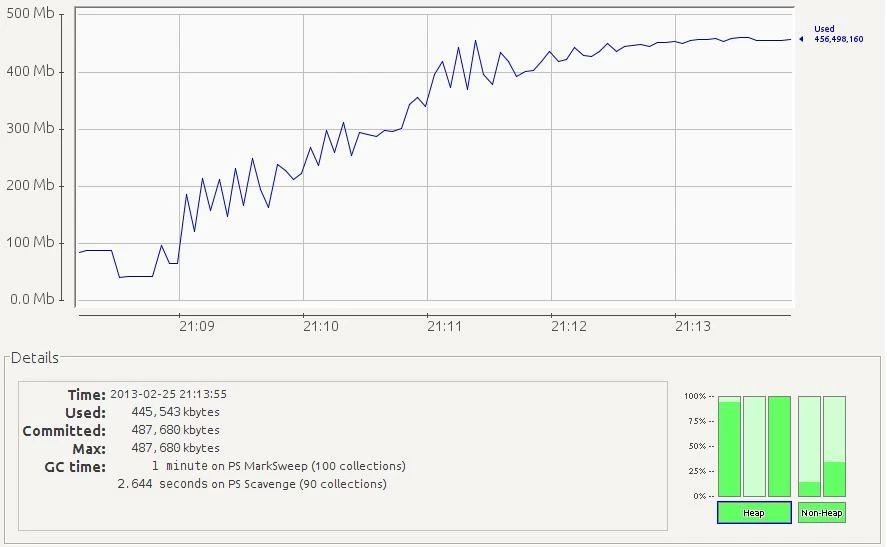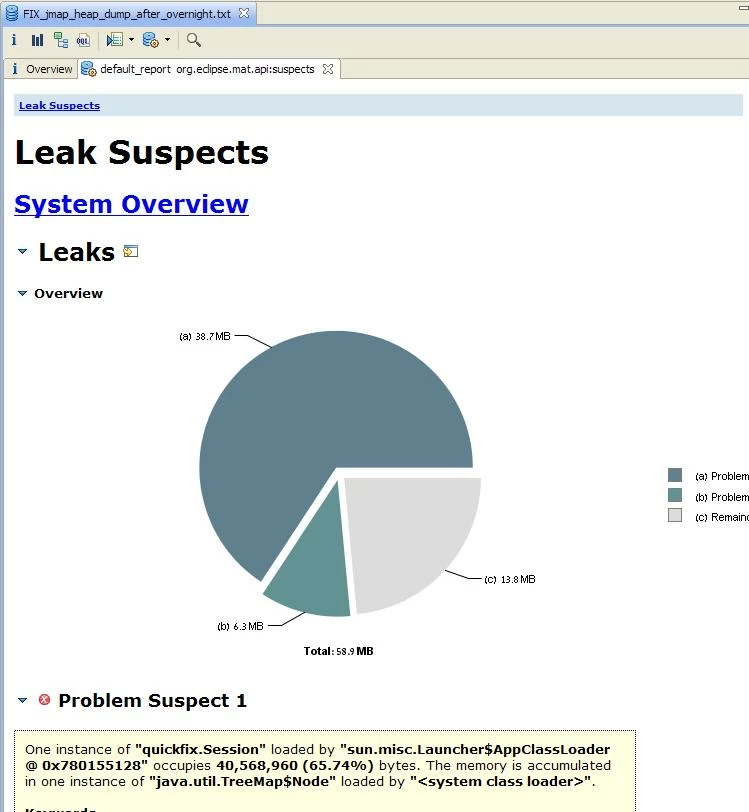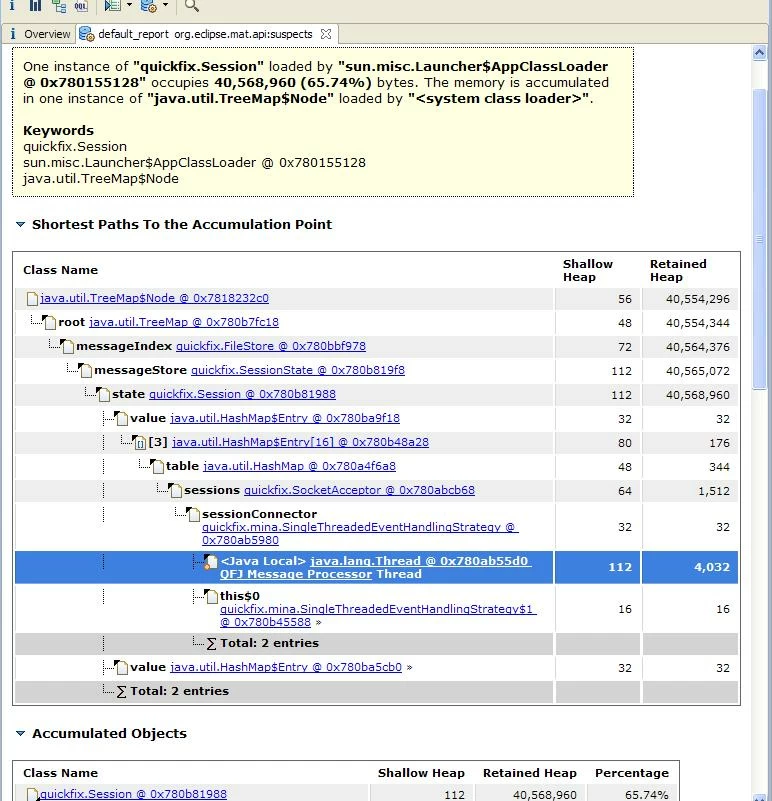Monitoring and detecting memory leaks in your java application
So your application is running out of memory, you’re spending days and nights analyzing your application hoping to catch the memory holes in your objects. The next steps will explain how to monitor and detect your memory leaks to make sure your app is on the safe side.
1. Memory leak suspicion
If you have a suspicion there is a memory leak a convenient way to make sure it’s really there is using jconsole. You can locally or remotely connect jconsole to your app and let it monitor for a while(Hour, Half day, Overnight, Week..) After connecting jconsole to your app start analyzing the “Memory” tab. A memory leak suspicion would look like this:
2. How to find the leaking sources in your application
For this purpose I recommend using jisualVM. this tool is part of the JDK. Inside jvisualVM you can take Heap Dump( Inside the “Monitor” Tab). Please keep in mind that it’s not possible to create Heap-Dump remotely. You’ll need to either run jvisualvm on the same machine or execute jmap command to produce a Heap-Dump file and import it later into jvisualvm.
* Jmap is an oracle tool that prints all objects memory map tree for a given process. Here’s a jmap documentation.
So basically you run the jmap on your remote server(for instance your production environment) and then analyze that file locally. I recommend to do several Heap dumps. That will give you better picture whether you have memory leaks or not.
3. Analyzing the Heap dump file
I personally like to use MAT(Memory Analyzer) (http://www.eclipse.org/mat/). MAT takes the heap dump file and helps you find memory leaks. MAT shows exactly which instances have memory growth suspects. You might notice Java libraries instances as a ‘Problem Suspect’ such as: “java.lang.Class” but this is normal.
Example for a leak detection
Here you can see the exact instance which is suspected as a leaking component.
4. Analyze suspected objects
Next step is to press on the details field of the suspected instance and investigate the objects inside:
In the above example we can see clearly that field of type TreeMap is growing.
5. Fix your leak and run the test again
Now what’s left is to understand and fix your leaking source – but ofcoruse this is individual for each object. These step-by step directions will help you detecting the leaking memory objects.






Definitely valid approach to leak detection. But maybe it is also good to take a look at what http://www.plumbr.eu has to offer in the field.
Muchas gracias, me sirvió mucho